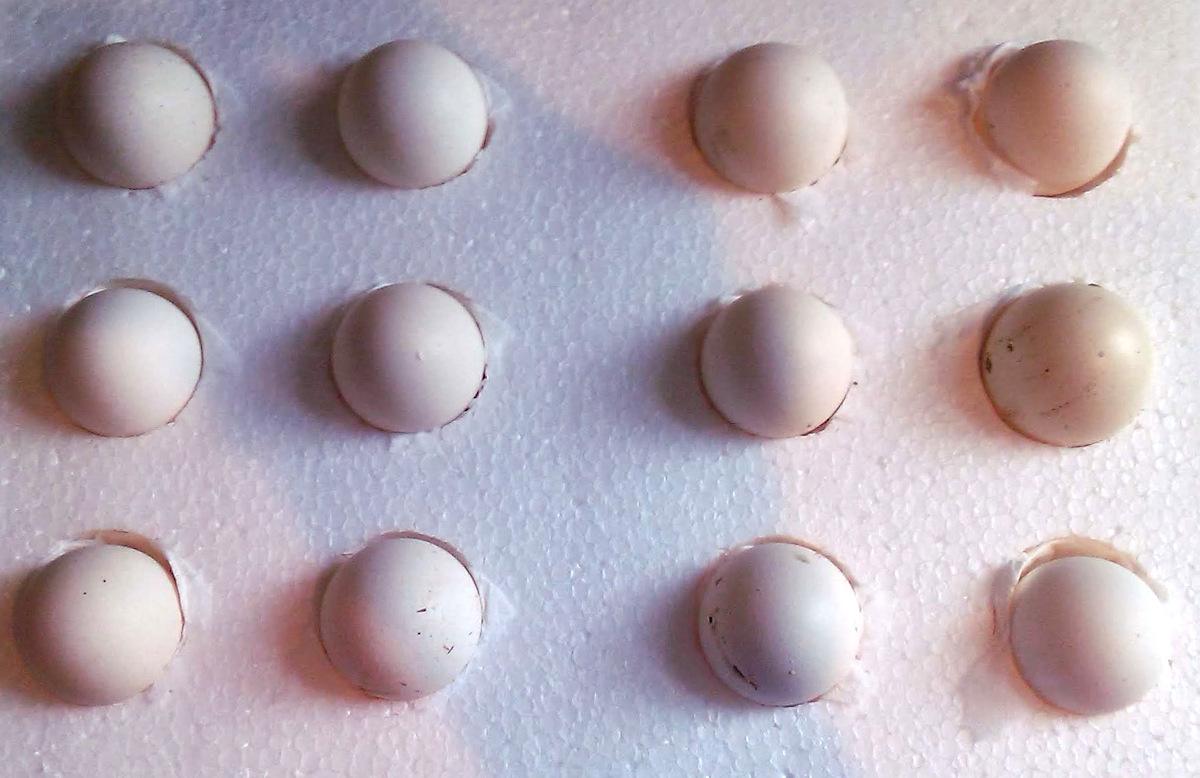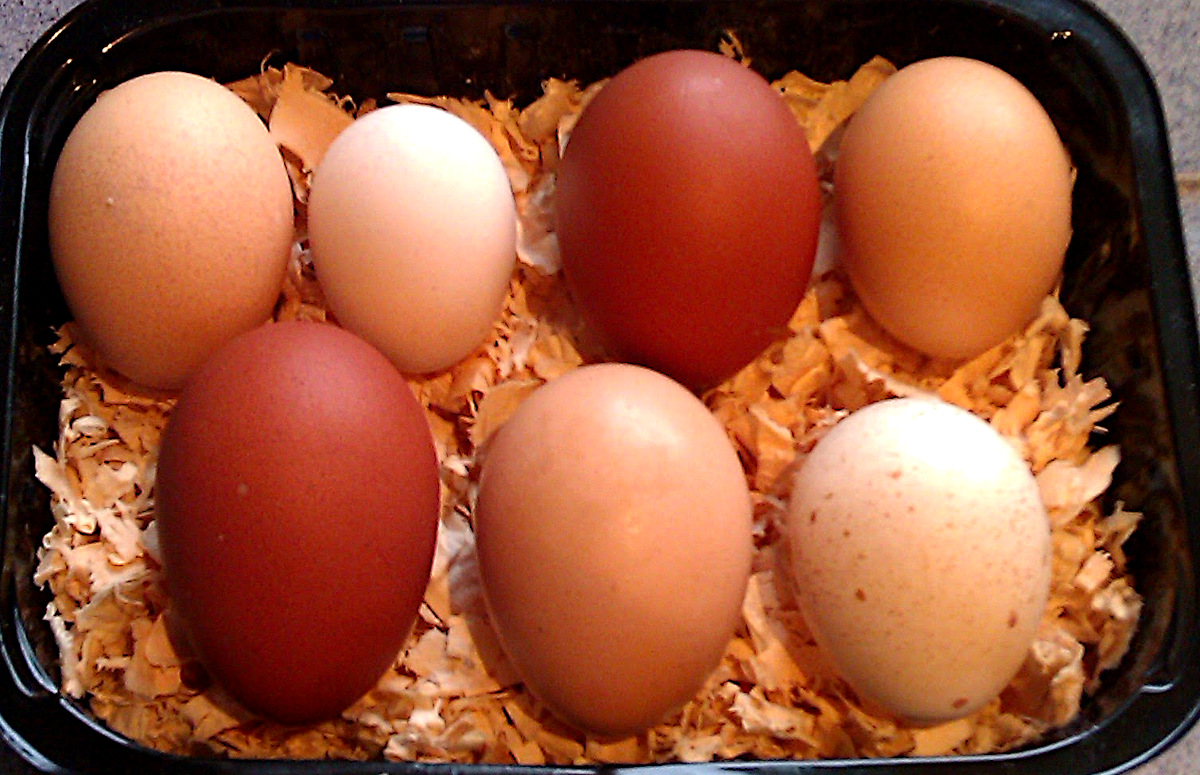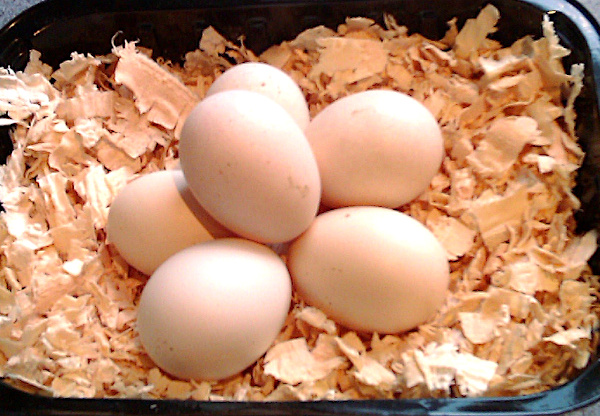
Japanese bantam eggs. A Complete Guide.
The origins of Japanese Bantams can be traced back to the country of Japan, where they have been bred for centuries.
There is a story that the tiny birds and eggs were bred by the peasant classes because birds and eggs over a certain size were the property of the Daimyo, the Japanese Feudal lords.
Originally used for both their ornamental value and egg production, these birds were prizes for their small size and attractive appearance. Over time, the popularity of Japanese Bantams has spread around the world, and today they are enjoyed backyard flock owners in many countries.
The nutritional value of Japanese bantam eggs is the same as the eggs from any other chicken, they are just much smaller. The cost compared to regular chicken eggs is higher as they are no where near as productive as other breeds.
Below: A comparison of sizes with other chicken eggs. The Japanese bantam egg is second from the left on the top row.

It takes three Japanese bantam eggs to equal 1 large fowl egg.
Cooking time for Japanese bantam eggs 2 minutes 40 seconds for soft boiled to 3 minutes 20 seconds for hard boiled.
My Japanese bantams eggs are peewee in size and weight between 24 and 32 grams, just over an ounce. I eat all my surplus bantam eggs, as my birds free range the egg quality is excellent.
Below: 6 Japanese bantam eggs.

The breed standards call for a "tinted" colour egg, which is a light cream. The reality is that Japanese bantam eggs can be almost any colour between white and light brown.
Japanese bantam eggs are produced in small numbers as they are not specifically produced for culinary purposes, you can eat them and they are very nice but Japanese bantam eggs are more valuable if hatched.
Japanese bantam chickens can lay up to 140 eggs in their first year but 80 is a more realistic number.
The tendency is to produce eggs in flushes of 12 to 16 and then take a break of a week or two. Japanese bantams are seasonal layers and rarely if ever produce eggs in winter. This translates into about three eggs a week.
While it is possible for Japanese bantams to come in to lay as early as 24 weeks if hatched early in spring, it is more likely it will be 30 weeks or so before they lay any eggs. Birds hatched late in the season will not produce eggs until the following year.
The egg production and collection process is the same for any other type of chicken but their small size and thinner shells makes them more prone to breaking and they should be collected more often and stored carefully.
Japanese bantam eggs can be difficult to find and expensive to buy.
Uses of Japanese bantam eggs include eating, hatching and showing.
Japanese Bantams are a popular choice for hobbyist breeders and those interested in starting a small-scale breeding operation. Their small size and unique appearance make for an attractive and entertaining addition to any backyard flock.
